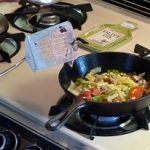by Winding Pathways | Sep 20, 2016 | (Sub)Urban Homesteading, Foraging, Mammals, Nature

A variety of fencing keeps deer and rabbits out of the garden.
Like millions of American homeowners we at Winding Pathways have a love/hate relationship with deer. Few animals are as beautiful as a peaceful doe nursing her fawns or as majestic as a powerful buck sporting husky fall antlers. But a love of deer only goes so far. Anger mounts quickly when they devour flowers and vegetables, girdle valuable trees, or dart in front of the car on a dark night. Last year we planted a small river birch that was growing well until a buck utterly destroyed it while rubbing his antlers on it. Frustrating!
Until about 25 years ago deer mostly lived in large forests and rarely ventured into town or suburbia, but as their rural population grew they moved right into town. Most suburbs have plenty of wooded pockets where deer can hide and nutritious forage in parks, gardens, and yards. Today deer are amazingly abundant in suburbia, where they prance up and down streets and dine on valued vegetation.
DEER DAMAGE
Deer generally do two types of vegetation damage. One’s relatively easy to prevent, while the other is more challenging.
RUBS: Antlers form during warm months as a blood rich skin, called velvet, nourishes fast growing bone like antlers that are mostly calcium. By September, antlers have reached full growth. Velvet dies and dries, and bucks remove it by rubbing antlers against small trees. They prefer saplings a few inches in diameter. Rubbing often girdles and kills the tree, and deer always seem to attack the most valuable tree in the yard. It’s infuriating and costly. Although velvet is mostly gone by early October deer continue to bang and rub their antlers against trees throughout the fall.
The Cure: Fortunately there’s an easy way to prevent rubbing.
At Winding Pathways we use heavy wire in 2” X 4” mesh that we buy in 50 foot rolls. It’s relatively easy to cut an eight foot length of fencing using wire cutting pliers. Once we have the section cut we ring it around the tree and hold the ends closed with cable ties. Usually one metal fence post driven 18” into the ground will hold the wire in place. Sometimes two posts placed on opposite sides of the tree are needed. We attach the wire mesh to the post using big cable ties. The wire stays in place year round until the tree is at least 4 inches in diameter and no longer threatened by rubbing.

Attache zip ties firmly to a post.
What You Need to Make a Wire Ring
- Wire: We buy rolls of 2”X4” four foot tall galvanized wire mesh from a farm or building supply store. Many brands and types of wire mesh are for sale but we prefer Red Brand. It is stiff and strong and we usually only need one fence post to hold it up. Red Brand fencing is made in the US. Less sturdy wire mesh is cheaper but bends easily, rusts more quickly, and usually requires a few fence posts to hold it in place.
- Pliers: We unroll about eight feet of the wire roll on the driveway for cutting. Any type of cutting pliers will work to cut off a section but we find “Bernard” pliers perfect for the task. These are usually made for anglers and have a wire cutter and spring that automatically opens the pliers after a cut. They make slicing off a section easy and fast.
- Fence Post: With stiff wire mesh one fence post will hold a ring of wire in place around a tree. Wire mesh that readily bends may need two or three posts. We buy 6 foot posts, called T posts, at farm or building supply stores and pound them 18 inches into the ground 12” to 20” out from the tree’s trunk. A small sledge hammer makes a handy pounding tool. We then form a circle of the wire panel around the tree and fasten the ends together.
- Cable ties, sometimes called nylon zip ties, make joining the ends of the wire mesh and attaching the wire to the fence post easy. The ties come in various sizes. It takes big ones to run through the wire mesh and secure around the post. Twist wire also works to hold the ends together or attach the wire mesh to the post.
Putting a ring of wire around valuable young trees is almost certain to protect them from rubbing and browsing. Just be sure to do it before damage starts.

At Winding Pathways deer come into the yard. We protect young trees with fencing as seen in the back to the right.
LUNCH AND DINNER WITH BREAKFAST TOSSED IN: Deer love eating many landscape and vegetable plants. Although they have preferences, the hungrier the deer, the more likely they are to even eat plants they generally dislike. Garden books often list species of plants that deer do and don’t like to eat but beware, like humans, individual deer have food preferences. Although most deer may not like a particular plant species, others may consider it a dining delight. Deer seem to have regional tastes, so the plants they don’t like in Connecticut may be gourmet fare in Alabama or Iowa. Unfortunately, many plants that deer relish are the same ones homeowners like to plant, so protecting them is vital to success.
Damage to trees by rubbing is seasonal and normally only happens in the fall. In contrast browsing damage happens all year with deer generally eating softer vegetation during warm months and twigs during winter.
The Cure: Preventing deer from eating valued vegetation is difficult but here are some ways to either eliminate or stop it:
Fences
No doubt about it. A sturdy fence keeps deer away from plants and prevents damage. Fencing has downsides. It’s expensive, often unsightly, and it requires maintenance. A fence can ring an entire property or just an area that needs protection, such as around the vegetable garden. Generally there are two types of fence used to prevent browsing.
- Electric fences work well. Many newer ones are moveable and easy to install. Electric fences don’t need to be very tall. They are relatively expensive but their biggest disadvantage is that they sometimes give a shock to a careless homeowner or even a child. Many towns ban electric fences, so be sure one is legal before you buy one. We like fences made by Premier.
- Nonelectric fences work well to exclude deer but also have disadvantages. They are laborious to install and are relatively expensive. They can be made of heavy duty nylon or wire mesh. Deer are amazing high jumpers and can clear a six foot fence, so a deer proof fence should be eight feet tall!
Repellents
A good fence will prevent deer damage by keeping hungry animals away from desirable plants. Repellents are less certain but can help reduce damage. Repellents are most helpful when temporary protection is needed or where fences won’t work and they are less expensive. They have these disadvantages:
- Need to be reapplied often and always after a rain.
- Sometimes smell strongly.
- May not be suitable for use on vegetables.
- Only somewhat deter deer from snacking.
Our good friends Dave and Sue Kramer own Kramer’s Flower Farm and produce thousands of varied colored day lilies every year. Visit their farm in mid-summer and it is a sea of blooms. People love looking at colorful flowers but deer consider them lunch. Kramer’s farm is surrounded by woods, so they have to be vigilant in keeping deer way from their crop. Dave uses a home-made spray that keep deer at bay.
Kramer’s Deer Repellent Recipe
Ingredients:
One gallon of water.
Three egg yolks
One teaspoon garlic powder.
One teaspoon cayenne pepper finely ground
Directions:
Add ingredients and shake well. Leave in the sun for a couple of days. Shake again and filter through an old nylon stocking to remove lumps or they will clog the sprayer. Put in a standard sprayer and spray plants. Treatment needs to be repeated often and after every rain.
Deer don’t like the smell or taste of rotten eggs. Who would? Anyone who would rather not make their own egg based spray can buy commercial mixes. The one we use is called Deer Stopper and is made by the Messinas Company. The label says it’s made of putrescent whole egg solids, rosemary oil, mint oil and several inert ingredients.
After buying several inexpensive sprayers that clogged we bought a Stihl brand sprayer that works well and seems less likely to clog.
Whether using a home-made or commercial repellent remember it needs to be reapplied relatively often and always after a rain.
Direct Action
Winding Pathways is near Cedar Rapids, Iowa. Several years ago the City Council approved allowing citizens to hunt deer using archery equipment. Hunters need to prove proficiency with their equipment and special rules are in place to ensure safety. Each year hunters convert several hundred suburban and urban deer into chops and steaks. Deer meat is “free ranging, local, organic” and delicious.
Each year we harvest a deer from our property. This doesn’t stop deer damage but does provide us with food, and if enough people each take a deer, their population density and, thus, damage will decline. So, if it’s legal in your area, consider converting a deer to food. Normally a state and sometimes a local permit is needed. Look for a future Winding Pathways blog on how to harvest and dress a deer.
by Winding Pathways | Sep 10, 2016 | (Sub)Urban Homesteading, Chickens

Checking the fresh vegetables as they cook in the cast iron pan.
Want to buy a product that’s inexpensive, American made, can be used every day of your life and then passed on to your children as a legacy? Cast iron cookware fills the bill.
One cool August morning Rich collected eggs from our backyard chicken flock, pulled out a cast iron skillet, and minutes later we enjoyed a delicious omelet. “That skillet once belonged to my great grandmother. It’s been handed down through generations and must be a century old yet still works great,” he said.
In this day and age when nearly all products quickly become obsolete or break, cast iron is amazingly durable. This type of cookware has been manufactured for well over 100 years and new and old ones cook amazingly well.
“I can’t think of any product as enduring as cast iron cookware. They truly last a lifetime or longer,” said Mark Kelly of Lodge Manufacturing. The company makes dozens of types of cast iron cookware in its Tennessee facility. Other American companies make small quantities of artisan cast iron skillets but they are pricey, while low quality ones are imported from China.

pans on the stove
We love our cast iron and regularly use several skillets of different sizes and a Dutch oven to slow cook winter stew. Several are of unknown age but obviously old. Few have any writing embedded in them so their age and who made them is unknown. We augmented our heritage pans with a few new ones made by Lodge Manufacturing. Here’s what we like about our old and new cast iron cookware:
- Lasts nearly forever.
- Easy and fun to use. Clean up is a snap.
- Heavy cast iron produces an even heat and adds a tiny bit of nutritional iron to food.
- Made in the US! Partially of recycled metal. In the unlikely event that one cracks we can recycle it.
- Food coming out of cast iron is delicious.
- Amazingly inexpensive to buy. A small skillet costs under $20.
Rich’s Sunday Morning Pancakes or Winding Pathways Waffles
2 cups whole wheat flour
½ cup buckwheat flour
½ cup milled flax or oat bran
½ cup sunflower seeds or minced pecans
¼ cup of raisins or small pieces of apple.
Two tablespoons of powdered milk
One tablespoon of baking powder
One fresh egg
Vegetable oil. (optional but needed for waffles)
Combine and mix dry ingredients and add water while stirring. Pour pancake sized pool of batter on a heated cast iron skillet. Cook on medium heat until bubbles in mix break. Flip and cook the other side. Enjoy with butter or a dollop of yogurt and warm maple syrup.
Cast iron cookware is often sold in hardware and outdoor stores and online. For information contact Lodge Manufacturing.
Our friends, Jim and Diane Low, of Missouri are accomplished chefs who specialize in cast iron cooking over wood coals. Jim wrote, “The morels and wild turkey with bow-tie pasta and nut-crusted venison loin best fit the hunting/foraging description.” He shared several of his favorite recipes:
Wild Rabbit & Bowtie Pasta in Chardonelle Cream Sauce
Here’s the recipe, as best I can reconstruct it. It was a work in progress the first time, and I honestly don’t remember exactly what I did. Furthermore, the following includes things I will do differently next time – such as adding the mushrooms. Take this as a starting point for your own creativity.
INGREDIENTS
Back straps from 2 large or 3 small rabbits, cut in 1” cubes. Substitute chicken breast if necessary.
olive oil
12 oz. of Bill Powell’s Chardonelle
12 oz. of chicken stock
4 medium shallots, finely chopped
4 bay leaves
2 teaspoons of cracked peppercorns
12 sprigs of fresh thyme, chopped
8 oz. half and half or heavy cream
1 large green bell pepper and 1 large red bell pepper sliced into thin strips about 2 inches long
8 oz of fresh mushrooms, sliced ¼ inch thick
1 stick of cold butter, diced
Fresh lemon juice
Salt to taste
PREPARATION
Sear the meat. Put it in a bowl and keep warm in the oven.
Add a little olive oil to the skillet and sauté the shallots on low heat until they begin to soften. Add the stock and increase the heat to medium. Use a spatula or wooden spoon to scrape up the browned meat juices from the bottom of the skillet and dissolve them in the stock. Add the seasonings and continue simmering until the liquid is reduced by 2/3. Add the cream and reduce the resulting mixture by half.
Remove the sauce from heat and strain into another container, then return the sauce to the skillet and whisk in the butter. Season to taste with salt, lemon juice and additional pepper, if needed. Stir in the browned rabbit chunks and keep warm.
Cook pasta. I recommend bowtie, ‘cause it’s cute. While it is cooking, sauté the bell pepper strips and mushrooms in butter until soft on the outside, but still firm. Place pasta in a large serving bowl and arrange the bell pepper strips on top. Pour sauce and rabbit meat over the top. I don’t know how much pasta you should cook. I cooked too much, then discarded what I thought was too much for the sauce.
CHICKEN & DUMPLINGS
1 pound of chicken breast, cut into 1-inch chunks
2 Tablespoons margarine or butter
1 cup diced potatoes
12 ounces of mixed vegetables (thawed)
2 Tablespoons crumbled bacon
small can mushrooms, drained
2 teaspoons parsley flakes
1 can cream of chicken soup
4 ounces evaporated milk
½ teaspoon paprika
½ teaspoon sage
2 cups Bisquick
4 ounces evaporated milk
½ cup water
2 Tablespoons water
1 egg, beaten
Melt 2 Tablespoons of butter in a 12-inch DO on low heat (7 briquettes under oven). Sauté chicken until cooked through. Add potatoes and cook another 3 minutes. Add veggies, bacon, mushrooms,, parsley soup, 4 ounces of milk and spices. Cook on medium heat (12 briquettes under oven) with lid on. While heating, cut remaining butter into Bisquick in a mixing bowl. Stir in milk, water and eggs in a mixing bowl. When chicken mixture bubbles, drop tablespoon-sized dollops of Bisquick mixture on top of broth. Bake 25 minutes at 350 degrees (8 briquettes under oven, 16 on top)
ZUCCHINI BAKE
3 cups grated zucchini
1 ¼ cups uncooked oatmeal
1 cup grated mozzarella
1 Tablespoon dried, minced onion
1-3 teaspoons dried, minced garlic
1 egg, beaten
1 teaspoon dried basil
½ teaspoon salt
¼ teaspoon black pepper
½ cup tomato sauce
Mix all ingredients except tomato sauce in order listed. Pour into a 10-inch Dutch oven and top with tomato sauce. Bake 30 minutes at 350 degrees.
PULL-APART BACON BREAD
2 3-ounce cans of cooked bacon pieces or 24 ounces of bacon, fried and crumbled
1 Tablespoon of cooking oil or bacon grease
½ cup chopped green pepper
½ cup chopped red pepper
1 cup chopped onion
4 tubes of buttermilk bisquits (30 ounces)
¾ stick melted butter or margarine
2 cups (8 oz) grated cheddar cheese
Preheat a 12-inch Dutch oven to 350 degrees. Place a small tin can in the center. Saute vegetables in oil. Cut biscuits into quarters and place in a large mixing bowl. Add sautéed vegetables, bacon, butter and cheese. Toss until well mixed and arrange around the tin can. Bake at 350 degrees for 30 to 40 minutes. Invert into a serving pan as soon as cooked and serve immediately.
BASIL, BELL PEPPER AND JACK CHEESE CORNBREAD
1 cup chopped onion ½ cup chopped fresh basil
1 ¾ cups cornmeal 3 eggs
1 ¼ cups flour ¼ cup sugar
2 ounces diced red bell pepper 1 Tablespoon baking powder
1 ½ cups grated pepper jack cheese ½ teaspoon baking soda
1 1/3 cups canned or frozen corn, drained 1 ½ teaspoon salt
½ cup unsalted butter, chilled and cubed 1 1/2 cups buttermilk
Melt 1 tablespoon of butter and sauté onions until tender. Set aside to cool. Mix cornmeal, flour, baking powder, baking soda, salt and sugar in a large bowl. Add 7 Tablespoons of butter and rub into the flour/meal mixture with your fingers until it resembles coarse meal. Whisk milk and eggs together in a small bowl. Add milk mixture to dry ingredients and stir until blended. Fold in cheese, corn, peppers, basil and onion. Transfer to Dutch oven and bake 45 minutes at 400 degrees.
ROAST CHICKEN AND CARROTS
3-4 lb. roasting chicken 2 bay leaves
2 Tablespoons unsalted butter 2 springs of fresh thyme
2 tablespoons olive oil 1 cup chicken stock or bullion
2 cups diced yellow onions ½ cup dry white wine
6 garlic cloves, peeled and minced 3 cups stewed tomatoes (28-ounce can)
3 ½ cups diced celery Kosher salt and freshly ground black pepper to taste
4 cups carrots, peeled and sliced 2 Tablespoons fresh parsley
Put butter, oil, onions, garlic and celery in oven and saute over medium heat until softened. Add the carrots, bay leaves and thyme and cook another 5 minutes. Add chicken, stock, wine and tomatoes and season with salt and pepper.
Cover the oven and cook at 300 degrees for 1 ½ hours or until legs are loose and meat is falling off the bone. Replenish coals every 30 minutes and turn oven and lid every 15 minutes. Remove bay leaves and thyme spring before serving.
To make dumplings, add 2 cups of chicken stock when chicken is cooked and bring to a slow boil. Add dumpling dough per instructions on Bisquick box.
LEMON PEPPER CHICKEN SUPREME
4 chicken breasts
12 ounces of Lawrey’s Lemon Pepper Marinade
16 fresh asparagus spears
1 cup crab meat
4 medium mushrooms, sliced
1 small onion, sliced
6 tablespoons grated parmesan or romano cheese
4 slices of bacon
1 Tablespoon sesame seeds
2 sandwich-sized slices of swiss cheese
1 medium avocado
1 Roma tomato
2 tablespoons sliced almonds
lemon pepper seasoning
Butterfly each chicken breast, leaving halves attached. Marinate in half the marinade for at least 30 minutes. Remove breasts and lay them flat. Discard used marinade. Sprinkle each breast with lemon pepper . Place four asparagus spears on half of each breast. Evenly distribute mushroom, onion slices and romano cheese on top of asparagus. Fold other half of breasts over to form a sandwich. Wrap each breast in a bacon slice and secure with a toothpick. Put the breasts in a 12-inch Dutch oven and pour half the remaining unused marinade over the chicken. Sprinkle sesame seeds and almond slices over breasts. Cook at 350 degrees for 45 minutes. While chicken is cooking, cut cheese slices diagonally to form triangles. Peel avocado and cut into slices ¼ inch thick. Slice tomato into thin round slices. When chicken is done, place on serving platter and arrange cheese triangles in alternating layers to produce a chevron pattern. Garnish with avocado and tomato slices and drizzle some of the remaining marinade over the chicken.
ASIAGO BRIOCHE (Relax, it’s just butter bread.)
1 package dry yeast (2 ½ teaspoons
¼ cup warm water
½ cup milk
½ cup butter (1 stick) at room temperature
2 Tablespoons sugar
½ teaspoon salt
3 eggs
1 egg yolk
3 ¼ cups all-purpose flour
1 cup grated or crumbled asiago cheese (Rromano or parmesan cheese are okay, too)
Egg glaze – one egg white beaten with 2 tablespoons milk
Sprinkle yeast into warm water and stir until dissolved. Heat milk until very warm. Beat butter until creamy. Add sugar, salt, whole eggs and egg yolk. Beat well. Add milk and yeast mixture. Add flour and cheese a little at a time and beating sell after each between additions. Turn dough out onto a lightly floured board. Knead until smooth and satiny. Place in a greased bowl and butter top lightly. Cover with a clean dish towel and set to rise in a warm place until double in size. Turn out on a lightly floured board. Roll into a 12-inch log and cut into thirds. Roll each third into an rope 1 ½ inches thick.. Lay ropes side-by-side on a lightly floured board, Pinch together at one end and braid tightly. Using a large metal spatula, lift the braid and curve it around the inside of a well-oiled 12-inch (regular, not deep) Dutch oven. Spread egg white glaze over top with a pastry brush. Cover and return to warm place to rise until double in size. Bake at 375 degrees 30-35 minutes, until the loaf sounds hollow when thumped. Serve warm.
PAPRIKA VENISON (OR BEEF) STEW
Ingredients
2 ½ – 3 cups of stew meat, cut into half-inch cubes
½ cup flour
3 Tablespoons of paprika
Salt & pepper to taste
3Tablespoons of butter
2 medium onions, diced
2 cloves of garlic, minced or crushed
1 teaspoon of marjoram
11 ounces canned diced tomatoes
½ cup cup (4 oz.) sour cream
½ cup red wine
Equipmment
Gallon-size resealable plastic bag
10-inch Dutch oven (for single recipe)
10-inch deep Dutch oven for cooking noodles
Medium large bowl to hold cooked meat
Place flour, salt and pepper in plastic bag. Add cubed meat and shake to coat meat completely. Melt 1 Tablespoon of butter in a 400-degree oven. (7 for a 350-degree oven, plus 4 for an additional 50 degrees, or a total of 13 for a 12-inch) Add half the meat and fry until golden brown. Repeat with the rest of the butter and meat.
Melt remaining Tablespoon of butter and sauté garlic and onions until transparent. Add meat, paprika, tomatoes, marjoram and wine. Simmer over low heat 45-90 minutes. Cook egg noodles so they are done when stew is finished. Just before serving, add sour cream and stir into sauce.
DIANE & JIM’S VENISON STEW
Stew
¼ cup shortening
¼ cup all-purpose flour
1 ½ teaspoon salt
10 ounce can beef broth
5 cups water
3 Tablespoons fresh lemon juice
1 medium onion, sliced
6 large carrots, quartered
4 stalks celery, quartered
8 ounces fresh mushrooms, sliced thick
2 cans green peas, drained
2 cloves garlic, crushed or minced
2 whole cloves
1 bay leaf
3 pounds venison, cut into 1- to 1 1/2 –inch cubes.
½ cup dry red wine
2 tablespoons flour
Dumplings
4 slices white bread
2 pounds potatoes coarsely grated
1 teaspoon salt
1 Tablespoon of onion, grated
1 Tablespoon of dry parsley flakes
2 eggs, well beaten
all-purpose flour
Melt shortening in a 12-inch deep or 14-inch Dutch oven over low heat (5 briquettes). Add flour and cook until caramel covered, stirring constantly. Add salt and next 11 ingredients. Boil 5 minutes (20-30 briquettes under oven, lid on. Add venison, cover and reduce heat until the broth barely simmers (5-8 briquettes under oven). Cover and cook 2 hours.
Remove crust from bread and discard. Drain all water from potatoes. Tear bread into 1-inch pieces. Combine bread, potatoes, salt, onion, parsley and eggs. Roll mixture into 16 balls and roll lightly in flour. In a small bowl, mix wine and flour until no lumps remain.
Stir wine & flour mixture into broth. Place dumplings on top of broth and simmer until dumplings are cooked through, 10-20 minutes (7-10 briquettes under oven, 10-20 on top.)
BREAD PUDDING
4 eggs
8 slices white bread
2 cups canned apples or applesauce
2 cups milk
1 to 2 sticks butter or margarine
2 cups brown sugar
2 cups raisins, softened in hot water
cinnamon
Beat eggs and milk together and set aside. If using apples, mash with a fork to chunky consistency. Drain raisins.
Line a 10-inch Dutch oven with heavy-duty aluminum foil, shiny side toward food. Make sure the foil stops just below the top of oven wall, allowing lid to seal properly.
Butter four slices of bread on one side, cut each diagonally and lay in a single layer to cover bottom of oven, butter side down. Spread half the apples over the bread layer. Sprinkle generously with cinnamon. Sprinkle half the sugar and all the raisins over the apples. Butter, cut and layer remaining bread, butter side down. Spread the rest of the apples and sugar over the top and sprinkle generously with cinnamon. Pour egg and milk mixture slowly over all, taking care not to let it run between foil and oven wall. Cover and refrigerate for 30 minutes to allow liquid to soak in.
Bake at 350 degrees (7 briquettes under, 13 on top) for 45 minutes. Remove lid and allow to cool before serving. Great plain, with ice cream or whipped cream.
NUT-CRUSTED VENISON OR BEEF LOIN
Grind 1 cup of pecans in a blender, food processor or meat
grinder. Mix the nuts with 1/2 cup of Italian flavored bread crumbs,
2 tablespoons of chopped fresh or dried parsley, 2 teaspoons of pepper and 2 teaspoons of salt. Add enough cooking oil to give the mixture a pasty consistency.
Put a 2-pound roast in a greased Dutch oven. Coat the roast with
the nut mixture. Cover and cook 30 to 45 minutes with about half of the oven lid covered with coals and a little less heat on the bottom. Serve when the meat is still pink in the middle.
Charcoal briquettes provide even, longest-lasting heat. If cooking in an oven, bake the roast at 350 degrees in an uncovered baking pan.
PINEAPPLE UPSIDE DOWN CAKE
¼ cup butter
½ cup brown sugar
¾ cup walnuts or pecans
1 can sliced pineapple
1 regular yellow cake mix
Eggs, water and other ingredients called for on cake mix box
Melt butter in a 12-inch Dutch oven. Remove from heat and mix in sugar. Arrange pineapple rings on top of butter-sugar mixture and place a cherry in the center of each. Sprinkle nuts on top of pineapple rings. In a separate bowl, prepare cake mix per package directions and pour into the Dutch oven. Bake at 350 degrees for 30-40 minutes. Remove from coals, uncover and let cool 10 minutes. Place a cutting board, foil-covered cardboard or a large plate over the top of the oven and flip. Oooh, ahh, and eat.
BAKED APPLES
12 small, tart apples
½ cup brown sugar
½ cup pecans or walnuts
½ cup raisins
¾ tsp nutmeg
1 tsp cinnamon
1 stick of butter
¼ cup water
Core the apples, leaving the bottom intact if possible. Arrange the apples in a 12-inch Dutch oven. Pour water into bottom of oven. Combine the other ingredients, and spoon the mixture into the hollow apples. Dot with butter and bake at 350 degrees for 30 minutes. Open oven and baste apples with pot liquor. Bake another 10 minutes or so, just enough to soften apples through. Best with vanilla ice cream.










